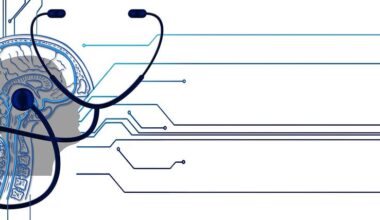Using Video Analysis to Improve Your Water Polo Performance
Video analysis has become an essential tool in the world of competitive sports, especially in water polo. By utilizing video techniques, athletes can break down their performance nuances and refine their skills. This process involves recording gameplay, allowing players and coaches to visually assess the crucial aspects of their playing style. Understanding key factors such as positioning, coordination, and teamwork can lead to significant performance improvements. Importantly, video analysis also provides a platform for comparing game footage against professional players, allowing for goal setting based on observable metrics. Furthermore, the use of technology can enhance training sessions by pinpointing areas that need improvement. Athletes gain valuable insight into their strengths and weaknesses by consistently reviewing footage. This leads to a more informed training regimen and a greater understanding of tactical approaches. In a sport requiring rapid decision-making, video analysis can be the difference between success and failure. By investing time in analyzing footage, players can master gameplay strategies that directly impact overall team performance. Innovative coaching strategies can also evolve from the insights gained, establishing newer standards of excellence in water polo.
The process of video analysis begins with capturing essential game moments, enabling a detailed review of specific plays. Coaches and players often use video playback to highlight critical instances during the match, which can be categorically analyzed for educational purposes. Among these points are crucial scoring opportunities, defensive maneuvers, and individual player skills. By creating a structured framework around these moments, teams can build a comprehensive understanding of what strategies work best, given different opponents’ tendencies. Players should focus on key techniques such as passing accuracy, shot selection, and defensive positioning. This attention to detail becomes the backbone of an effective training plan, maintaining the individual player’s growth. Advanced software supported by motion analysis provides deeper insights into player movement and behavior. These tools can mathematically represent player actions, allowing coaches to formulate better strategies. Moreover, pairing these metrics with athlete feedback creates a conducive environment for development. Regularly revisiting recorded footage not only stimulates self-reflection but instills a growth-oriented mindset among players. Ultimately, video analysis fosters a culture of continuous improvement and adaptability within the team, essential elements in competitive water polo.
Understanding Core Techniques via Video
When analyzing video footage, focusing on core techniques is paramount for improvement. Athletes gain an improved comprehension of their physical form and skill execution through this approach. Techniques such as treading water, passing precision, and shooting accuracy should be recorded and examined closely. By dissecting these fundamental movements, players can grasp what needs modification to enhance performance significantly. Coaches can offer pointed feedback on matters of body position, arm mechanics, and shot dynamics based on these video analyses. This targeted review enables athletes to address specific issues rather than relying solely on general training. As skills evolve, players witness tangible results during practice and games alike, reinforcing the continued effort they put into development. Incorporating video analysis into regular drills cultivates not only skill enhancement but also a sharper tactical understanding of water polo. Moreover, this approach serves as a motivational tool alongside fostering a competitive spirit among team members. Athletes become more accountable for their performance by witnessing their own progress through recorded sessions. Consistent analysis reveals patterns that might escape direct observation during the heat of a match, guiding them to make strategic adjustments.
Another vital aspect of leveraging video analysis is selecting specific games or training sessions that highlight various challenges. By reviewing footage from different opponents or conditions, players can adapt their strategies efficiently for future matches. Analyzing varied styles of play exposes them to new techniques and strategies that they can mimic or counter during their practice sessions. For instance, facing a physically aggressive team can highlight the need for defensive reforms, while a highly strategic opponent may encourage innovative offensive plays. Video analysis transforms real-game scenarios into rich learning experiences. Players are encouraged to view their gameplay from varying perspectives, helping them to simulate situations they might encounter in matches. Integrating feedback from coaches while reviewing these clips fosters a conducive environment for questions and growth. Additionally, engaging with fellow players during these discussions allows for collaborative learning opportunities. Players and coaches can jointly determine improvement areas creating specific drills to address those needs. Together, they craft tailored training sessions addressing identified weaknesses. This joint intellectual approach inspires trust and respect between coaches and players, reinforcing the foundation of a successful team.
The Role of Technology in Video Analysis
Modern technology plays a pivotal role in improving video analysis quality. Many teams turn to video editing software specifically designed for sports analytics, ensuring detailed breakdowns are accessible. This innovative software allows coaches to annotate footage, highlight specific plays, and draw attention to pivotal moments during the match. Mobile apps facilitate on-the-go analysis, making valuable feedback available to players instantly post-game. Players can share personal clips with coaches or teammates for collaborative learning experiences beyond the field. Enhanced internet connectivity enables seamless video uploads, making remote analysis more practical than ever before. By elevating the learning experience, technology enhances the overall execution of water polo skills with profound implications for athlete progress. Players can also record individual training sessions for immediate assessment, showing how off-the-pool practices translate into competitive play. Monitoring progress through these qualitative assessments strengthens the connection between practice standards and match performance. Moreover, reviewing these training videos helps solidify younger athletes’ fundamentals, laying the groundwork for more advanced techniques in the future. As technology continues to evolve, water polo teams must keep pace to harness its full potential.
Regularly implementing video analysis has several long-term benefits for athletes looking to excel in water polo. By fostering a habit of reviewing and critiquing one’s performance, athletes develop a heightened sense of awareness regarding their playing style. This awareness transcends personal improvement, positively affecting the entire team dynamic. Players begin to communicate more effectively as they witness the consequences of their decisions on team performance. Enhanced cohesion arises as players understand one another’s roles better through jointly analyzing plays. As individuals become more skilled, the team collectively rises, generating a culture of ownership regarding personal contributions. Furthermore, establishing a pattern of continuous feedback loops fosters resilience and determination among athletes. This process ensures that players remain committed to their development regardless of immediate results. By maintaining an open channel for feedback and continuous learning, teams witness significant elevation in performance. As trust builds over time, athletes gain independence during training sessions, applying lessons learned from video footage directly. Coaches can then focus on strategy development rather than repetitive skills training. The enhancement in performance achieved through structured video analysis ultimately leads to sustained success for the players.
Conclusion: Elevating Performance Through Consistency
In conclusion, video analysis stands as a transformative tool capable of enhancing player performance in water polo. The benefits of this method extend beyond skill improvements; it fosters a robust learning environment anchored in constructive feedback and accountability. By consistently embracing video analysis, players sharpen their skills and develop a deeper understanding of teamwork dynamics. This aligns individual growth with the team’s overall performance, crucial in a sport where coordination is vital to success. As athletes witness their progress through recorded footage, they reinforce their motivation levels and build a more profound commitment to improvement. Coaches also play a key role in facilitating this process, guiding athletes in interpreting footage effectively. The integration of modern technology into video analysis additionally paves the way for more advanced training methodologies. In the competitive landscape of water polo, the synergy between technology, teamwork, and video analysis becomes undeniable for achieving peak performance. Athletes are encouraged to invest time and effort into their preparation, reaping rewards during matches. With dedication to both individual skills and cohesive team play, water polo players can reach extraordinary heights.
Through the integration of video analysis as part of regular training sessions, water polo players unlock their potential, elevating their overall performance. By committing to differentiating challenges through video assessment, they cultivate a mindset geared towards continual development. The overarching message is clear: consistency in utilizing video technology can result in outstanding outcomes, making the effort invaluable for athletes and coaches alike.


